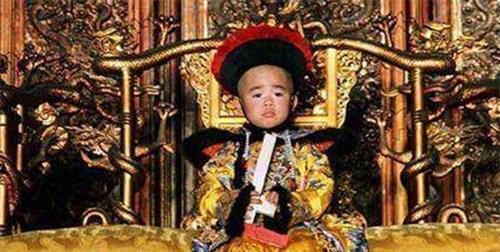On February 12, 1912, when every family was happily busy preparing for the upcoming New Year, Empress Longyu took Puyi, who was only 6 years old, to sit on the dragon chair for the last time and signed the abdication edict. When Empress Dowager Longyu stamped the imperial seal on the edict, it meant that the Qing Dynasty, which lasted for a total of 296 years from the establishment of Nurhaci to the Jin Dynasty, was officially declared extinct.

Puyi, as the last emperor in history, is full of tragic colors. But Puyi, who grew up in the Forbidden City, has never seen the outside world. Therefore, in 1924, when Feng Yuxiang sent Lu Zhonglin to lead troops into the Forbidden City to force Puyi to leave the palace. In addition to being sad, Puyi's heart was even more excited.
Puyi first, involuntarily, was carried into the imperial palace as emperor, and then in 1912, at the age of 6, he inexplicably abdicated. And although he can't be an emperor, he can still live in the palace, although he doesn't have any power to speak of. But it is still free, and there are also servants and eunuchs around to make a call. However, after being expelled from the palace by Feng Yuxiang, he completely became a puppet emperor.
In foreign countries, the great powers of various countries are even more eager to invade China. In particular, the ambitious Japanese of wolves have long been eyeing the tiger. Puyi naturally became a pawn used by the great powers. In 1932, Puyi came to the puppet Manchuria region under the charm and coercion of the Japanese and became the emperor of the "puppet Manchurian Empire".
Puyi's daily task is to sit on the "throne" and keep signing various documents, without a little freedom. In 1945, Japan announced its unconditional surrender, after which Puyi was captured by the Soviet Union and taken to Siberia. And imprisoned. He was escorted back to China in August 1950 and was eventually pardoned.
Later, Zhao Yi became an ordinary person thoroughly, going to work and commuting to work on time every day. Just to earn a bite of money for a meal, many people may think. It is said that the skinny camel is bigger than the horse, although the Qing Dynasty has long been overthrown. Didn't Zhen Yi really bring out some rare treasures or something from the palace?
In 1924, when Puyi came out of the Forbidden City, he still brought a few treasures. These things are small and valuable treasures that are easy to carry around. And these treasures also played a role in Puyi's escape many times, buying many guards and soldiers along the way.
Among these cultural relics, only one Puyi is reluctant to exchange for money and has been carrying it with him. Even when he was expelled from the Forbidden City in 1924, he said, "I don't want the Forbidden City, but I must take this treasure." This treasure is the Tianhuang Triple Seal of the Qianlong Period.
These three yellowstone jade seals are connected by a yellowstone jade chain, and the whole is crystal clear and very exquisite. The inscription on the book reads, "Only the essence is the only one", and it is said that even the Qianlong Emperor participated in the manufacture. For many years, Puyi has been regarded as a treasure and carried with him.
It was not until after the victory of the War of Resistance Against Japan in 1945 that Puyi handed over the seal to the state. Eventually, the treasure returned to the Palace Museum and became a rare exhibit for visitors to visit.